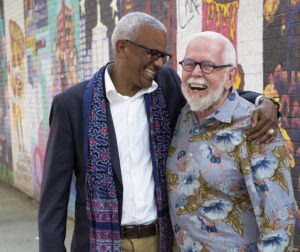Is long-term care ready for LEDs?
For the upcoming July 2011 issue of Long-Term Living, we asked three well known senior living designers to debate the pros and cons of various facility installations. The following is a breakout discussion on light-emitting diodes (LEDs).
LTL: Where do you stand on the use of LEDs in long-term care communities?
Brawley: The glare produced is a huge issue for older eyes but I have high expectations that is being addressed as well. We’re a year or two away but no doubt LEDs are likely to produce a significant change in lighting.
Cini: Ideally, the perfect next step would be for LEDs to be the lamp of choice in an ADA wall sconce where heat buildup is high and the depth is shallow.
Mitchell S. Elliott: In terms of LED light sources, I agree with some of the current challenges that Lisa and Betsy have brought up. In a new facility we are opening this July, we are using LED lighting for our nightlights in resident rooms and their adjacent bathrooms.
Brawley: Use red or amber LEDs—they provide sufficient light to get to the bathroom but don’t wake residents up as much as white light and make it much easier to go back to sleep.
Elliott: The light levels are low enough that we shouldn’t have a challenge with the heat buildup that is typical with LEDs at this point. We are also using LED lamps for our parking lot lighting. We can achieve the same light levels with the same number of poles while significantly reducing our long-term energy usage. We are waiting for further refinements of the LED technology before introducing this lighting source in other areas of the building.
Elizabeth C. Brawley, AAHID, IIDA, CID, is president of Design Concepts Unlimited and one of the preeminent authorities on lighting for senior environments. With more than 30 years of experience, Brawley specializes in designing therapeutic environments for Alzheimer’s special care and was awarded the 1998 Polsky Prize for research in this area. She is a founding member of the American Academy of Healthcare Interior Designers and holds an advisory position with the Illuminating Engineering Society of North America.
Mitchell S. Elliott, AIA, is chief development officer at Vetter Health Services, and serves as vice-president of the Society for the Advancement of Gerontological Environments. A 28-year member of the American Institute of Architects, Elliott oversees the planning, design, construction and property management of all 33 Vetter-owned nursing facilities and retirement communities throughout the Midwest. Elliott’s work reinforces resident-centered care, and he has been a member of the American Health Care Association Life Safety Committee since 2009.
Lisa M. Cini, ASID, IIDA, is founder and president of Mosaic Design Studio in Columbus, Ohio. Cini’s work has been recognized by the American Society of Interior Designers with the First Place designation in its Chapter 32 Design Awards every year since 2007, and she has received several local business awards in her home city of Columbus. Cini regularly participates in national speaking engagements on design and is a blogger for Long-Term Living (www.iadvanceseniorcare.com/CiniBlog).
Look for the full designer roundtable on flooring, lighting and furniture in the upcoming July 2011 issue of Long-Term Living.
I Advance Senior Care is the industry-leading source for practical, in-depth, business-building, and resident care information for owners, executives, administrators, and directors of nursing at assisted living communities, skilled nursing facilities, post-acute facilities, and continuing care retirement communities. The I Advance Senior Care editorial team and industry experts provide market analysis, strategic direction, policy commentary, clinical best-practices, business management, and technology breakthroughs.
I Advance Senior Care is part of the Institute for the Advancement of Senior Care and published by Plain-English Health Care.
Related Articles
Topics: Articles , Design











